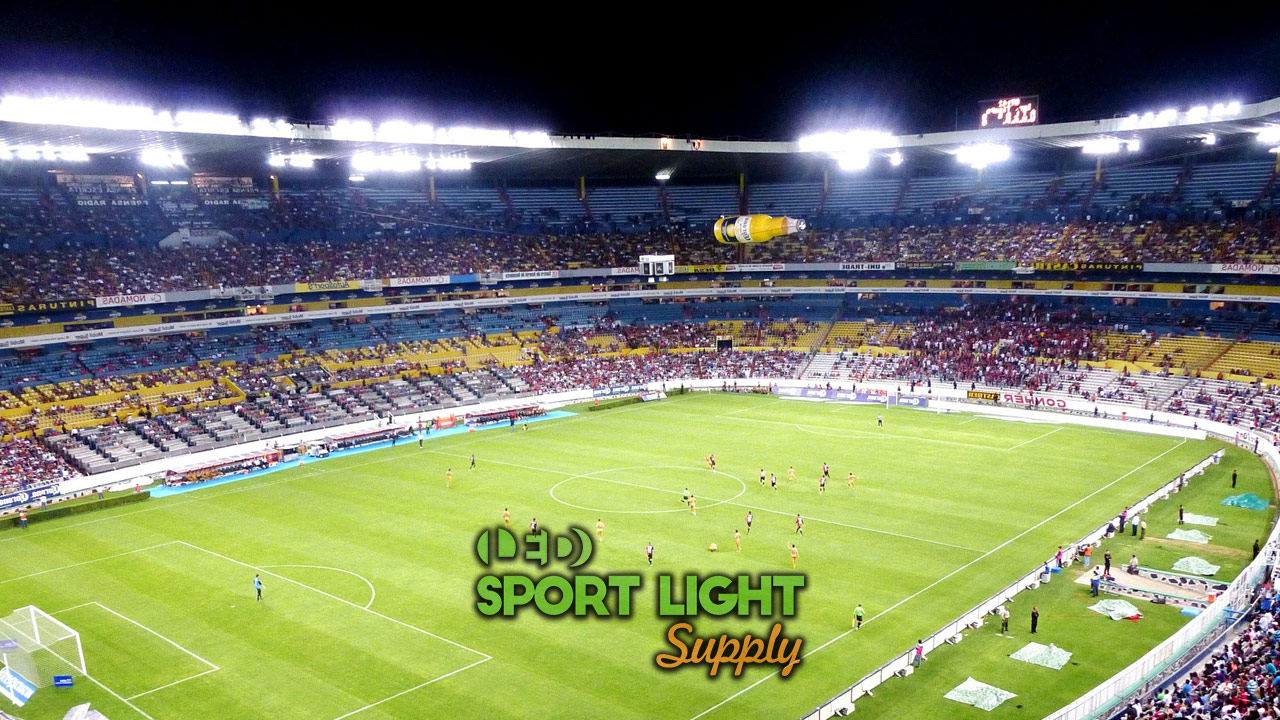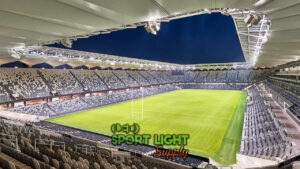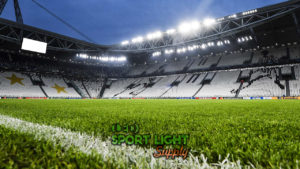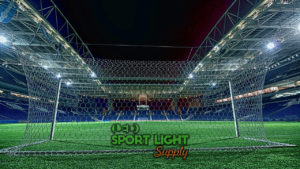The advantage of using smartphone technology to control sports lights has now become more user-friendly in recent years. What used to be a complicated set-up that was reserved for trained lighting technicians is now a portable easy-to-learn program. Are you looking to add a new level of entertaining light for your stadium and arena events? This guide can help inform you further how easy smart LED lighting can be.
What is a smart sports lighting system?
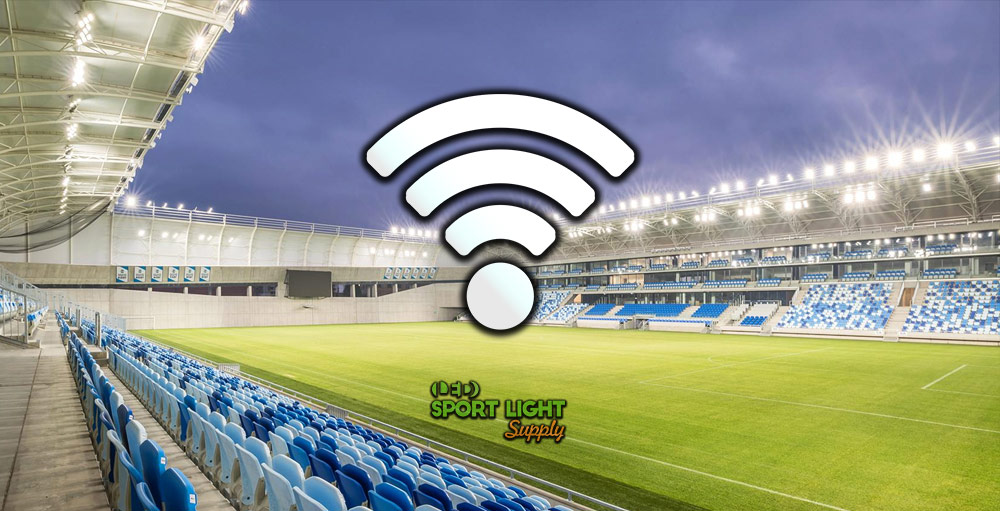
This is a relatively new innovation that combines the elements of WiFi and smart devices such as tablets or smartphones to professional-level LED lighting systems. It’s been used for years in the theatrical and entertainment venues but is now being embraced by the sports community. What it can do is control specialty lighting that changes floodlight color and brightness controls right through handheld smart devices.
Lights can be individually controlled or combined into groups to create stunning color and lighting control effects. It adds emotion and character to a sporting event to heighten the sense of achievement and excitement. Even though this kind of lighting emerged as a theatrical effect, the incredible impact it can make for sports adds value to the spectator’s experience.
The constituents of smart lighting solution in a sports stadium
In a nutshell, what can you expect from the individual components that make up smart lighting? It might be a bit of a surprise that very little aside from the light fixtures that are connected to a DMX system and power source. There is also the Bluetooth connection that goes right to a smart device, which controls the lights. The rest can be whittled-down to electrical wiring, lighting brackets, and the use of RGB lights.
RGB lights are specialized floodlights that allow individual colors including red, green, and blue to be mixed. These combinations can create over 16,000 color shades. This allows a user to create a depth of color control in a stadium adding a whole new layer of visual impact.
1. Floodlights that support DMX
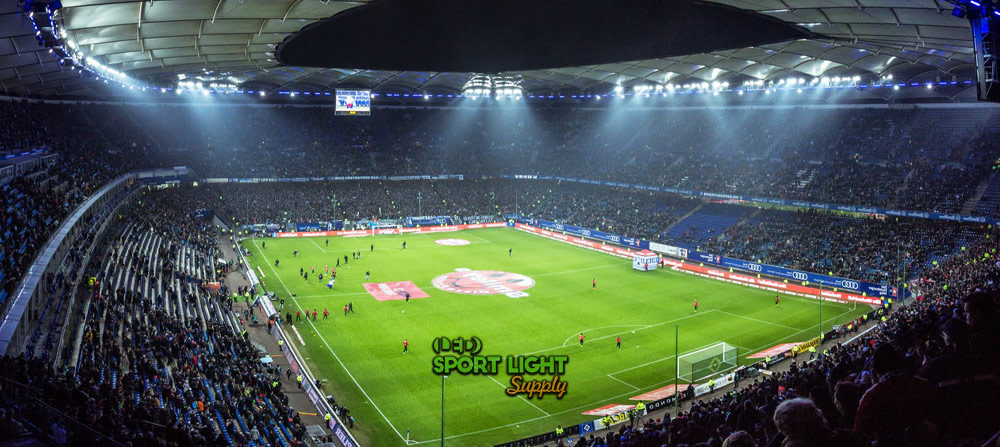
Any kind of sports lights that are operated using LED lights. This allows the DMX system to have brightness control, while RGB lights can further control color. It’s also important to mention that DMX has a unique ability to synchronize lights to follow specific blinking and strobe patterns. Sparkle effects and other intelligent pre-programmed effects are also built-into the DMX controller.
The main sports floodlights for the field can have brightness and fade control for obvious reasons. RGB lights are meant to light-up spectators and field lighting for selective lighting effects before or after a sporting event.
2. USB-DMX device
This is a simple add-on that integrates a smart device to the DMX control panel. It will allow a user to control lights away from the main DMX controller panel through their smartphone or tablet. The nice part about this USB attachment is that it uses a Bluetooth connection for the extended comfort of lighting control. Even when an additional USB connection is attached, the main controller panel self adjusts to show the same color change.
In effect, two light technicians can control the lights from two separate locations. The app that’s used for the DMX controller has options that allow a clever lighting sequence to be programmed into the main controller. The interface will then store that info so it can be used again and again.
a. Brightness control
Raising and lowering the lights is also an important function that can be achieved through the USB controller. This is mainly for field lights that can have more relaxed lighting before or after a match. It can also have an added appeal for team training where the lighting doesn’t need to be as intense. This signal is sent directly to the power supply of the LED light fixtures with no lag time. This is so results can be seen in real-time without waiting.
This is another appealing visual for a game match so that field lighting and spectator lighting can be combined. This can further excite an audience for grand moments of a team win or be used simply to enhance spectator energy levels.
b. Color changing control
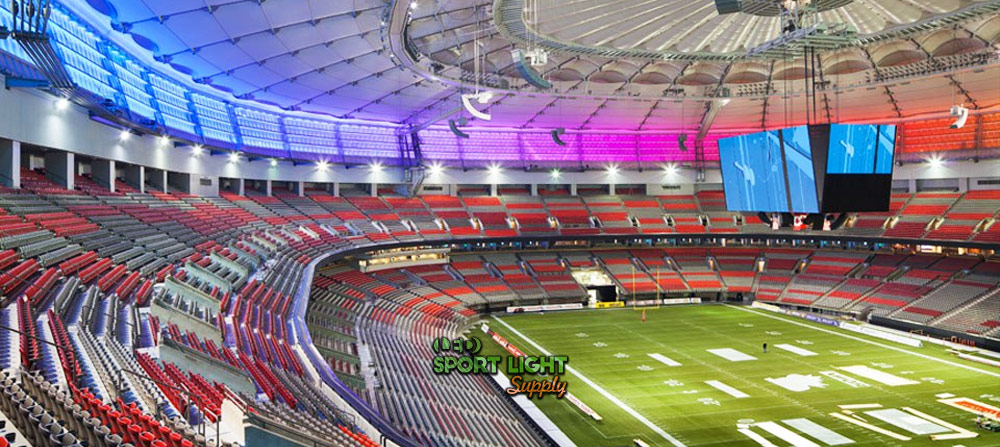
This is sending a signal to the red, green, and blue channels of the power supply for the LED. RGB lights can alter the color that’s desired by the lighting operator. Lights can be controlled to create new colors with added effects that go with the DMX controller. Chasing lights, sparkling effects, and programmed blinking of the RGB lights can all be adjusted accordingly.
With over 16,777 shades of colored light, with up to 255 saturated primary colors, the options are pretty wide open. Making a light spectacle for sporting events is now more of an extra show within the show. This is easily making your sporting event even more memorable.
3. User interface
The controls on your smartphone or computer device using WiFi using software to control the lights is made simple. With the ability to control the brightness, create light patterns, and color of the LED lights, your imagination isn’t hindered. The app is designed to be easy to use and doesn’t take much to learn the program. Unlike the older style of lighting boards, this app interface is meant to be user-friendly from the very start.
You can learn how to work the lights with this interface program in a single afternoon. It doesn’t require much technical training, but previous lighting experience does help.
4. Strong WiFi router
The advancements of how the WiFi networks are making it possible to connect several devices directly to your mobile devices. All you need is a good WiFi router and the rest is up to your preference. Using Z-Wave or ZigBee wireless technologies, you can connect the DMX transmitter into a wireless receiver. The lights work directly through a wireless network that can then control your LED lights.
Just as a strong WiFi router needs to have a connection, your WiFi network is protected and secure. These WiFi controls make a secure connection that cannot be broken or hacked. This is why it’s recommended to use secure WiFi connections such as Z-Wave or ZigBee.
Smart Vs traditional lighting system
A traditional lighting board is just like a clever musical instrument in its’ own right. It has slide controls and buttons that all control select lights. At times it can be an ordeal to work from a standard lighting control. The controls need to be memorized so that specific lights will work and adjusted from the slide controls. This is where the smart lighting program makes lighting controls more simplified and easier to handle.
Everything is reduced to an easy to read screen that can be seen on a smartphone or tablet. Then the touchscreen controls let you select the type of effect that can be created. The advantage of a smart system is managed on a single control screen instead of a manual control board.
Advantages of using the smart lighting solution in soccer, baseball, cricket stadiums
1. Grouping of LED lights
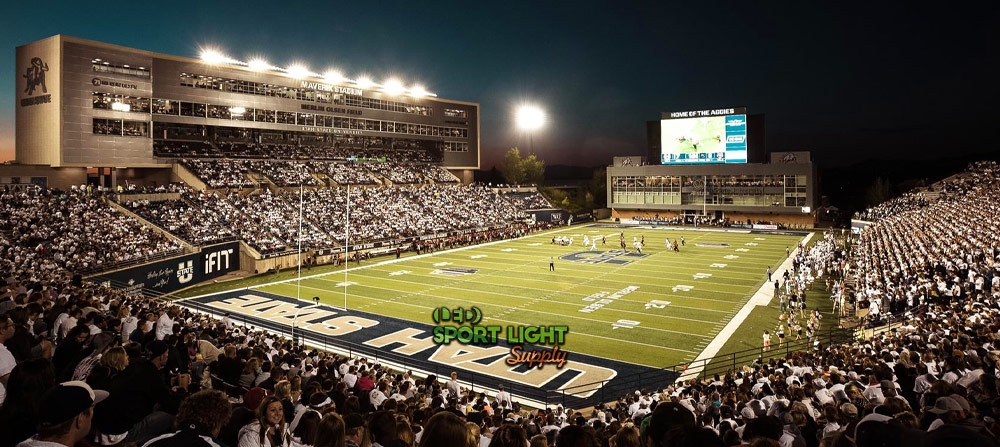
The DMX system is quite unique since it can control upwards of 512 lighting connections that can all be controlled. These can be programmed to work in groups so that intelligent special effects can be achieved. The ability to make sequencing or chasing light effects is done by adjusting the 512 channels that connect each light. This also allows for pre-programming effects that are replayed at the touch of a button.
These controls can then be extending to the mobile app where the exact command can then be done wirelessly. These lighting effects can also allow for colors to be incorporated into separate light groups.
2. Wireless control – no hassle
Using the wireless network, the lights can literally be controlled from stadium seat locations. This makes for a no-hassle experience so a lighting operator can see what they’re doing within the lighting area. It also allows for the maximum freedom to be creative when creating on-the-fly lighting effects. This can be extremely effective so that the operator can have a higher ability to sense the spectator’s moods.
Being inside a control booth doesn’t always give a lighting technician the benefit of crowd reaction. It can also help excite an audience with anticipation of critical seconds of a sporting moment.
3. Setting schedule
It’s becoming quite popular to include a light show for sports fans, especially if the crowd enjoys these lighting effects. Sports events including baseball, soccer, and cricket are great examples because they’re spectator supported. Baseball brings out families, while soccer and cricket are dedicated fans that are highly enthusiastic about their team support. Using special lighting cues, LED lights can bring fans closer to the action through colors and light patterns.
Excitement and celebration are as simple as glittering and sparkling lights, whereas cooler colors can increase the attention of a critical play. There’s a bit of psychological control that this lighting can produce, which is why experience light technicians understand this already. Sporting events simply make the addition of programmable lighting control more practical.
4. Security
During a stadium sporting event, it’s common that the house lights are dimmed to that colored lighting effects are seen easier. This can also mean that areas, where people need to exit the arena, need walkway light into exit halls. These halls can have spot lamps that are set for motion sensing. When show lighting is happening, light sensors for these exit or entry areas can operate independently.
This makes it safer for security so that people can go to the toilet or grab a snack without tripping. Stadiums often have steep stairways that can also benefit from directed motion sensors for stairway lighting.
Smart LED sports lighting Q & A
1. Is smart sports lighting worth it?
As with any other public display that’s held in an arena or stadium, times have drastically changed. The spectators who go to a stadium event are looking for something unique aside from the event itself. Audiences are expecting to be wowed with everything that a stadium can offer. From half-time shows to laser lights and fireworks, the list is endless as to how the attention can be entertaining.
Are smart sports lighting controls worth the effort to install? The simple answer is always going to be yes for the same reason that entertainment also includes sports events. Without the extra amount of pizzazz, normal sports lighting will be boring and uneventful. Today’s sport spectators are too sophisticated to not expect rock concert lighting effects.
2. Do smart LED sport light use power when turned off?
Some electrical appliances do draw current even when they’re turned off. The DMX light controller may have as little as 1 Watt that is used as Standby power when it’s turned off. Many analog controllers that are connected to an electrical source will all have standby power. This is often referred to as Vampire power’ the amount of wattage is so minimal it doesn’t affect electrical bills.
Many kitchen appliances that occupy a countertop space all consume standby power including microwaves and blenders. And while this Standby power is negligible for any significant amount of wattage loss, there can always be a solution. There can be a kill switch that turns stadium lighting completely if an entire system is drawing too much standby power.
3. How does a smart light work?
Smart lights are operated with the help of a clever wireless controller that’s connected through a WiFi network. These controllers can be smart devices such as tablets or smartphones but not limited to laptops. Once enabled, these devices connect to a controller that power lighting that is connected to a receiver. Since there is a main light control box somewhere, the signal is sent directly to this controller.
The lights will then be sent to the command to produce the desired effect. The lights can change color, increase or decrease in intensity, or turn on and off. They can also make special effects and sequenced blinking or flashing.
4. Does smart lighting save money?
All LED light fixtures save on the lighting costs for the entire lifetime that they’re used. The cost of the initial investment is what’s considered expensive. But much like construction costs of a stadium, it’s a long-term intelligent return that helps to pay for the costs over the years. Because many stadiums are now replacing their old lighting systems for smart LED lighting, this outgoing cost is a calculated expense.
To keep up with current needs for sports lighting, upgrading is essential for attracting spectators. Live sports events are attractive for several reasons and the experience never gets old. The amount of savings using smart lighting will indeed save money over time and help replace older lighting costs by 75-85%.

